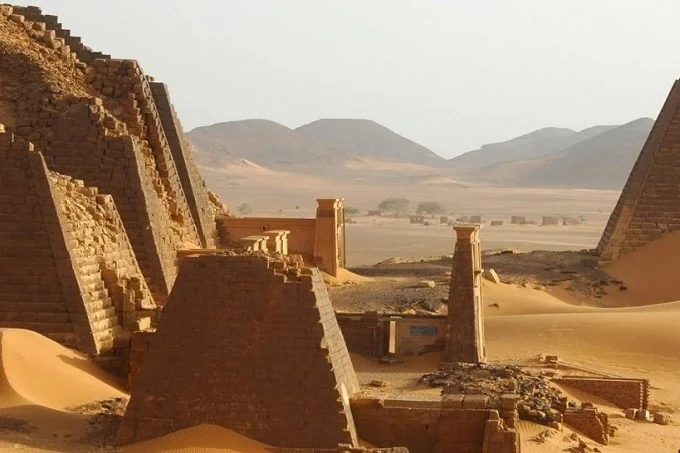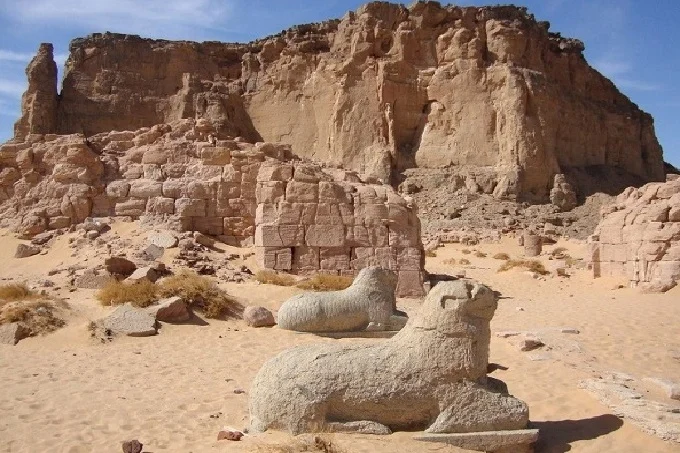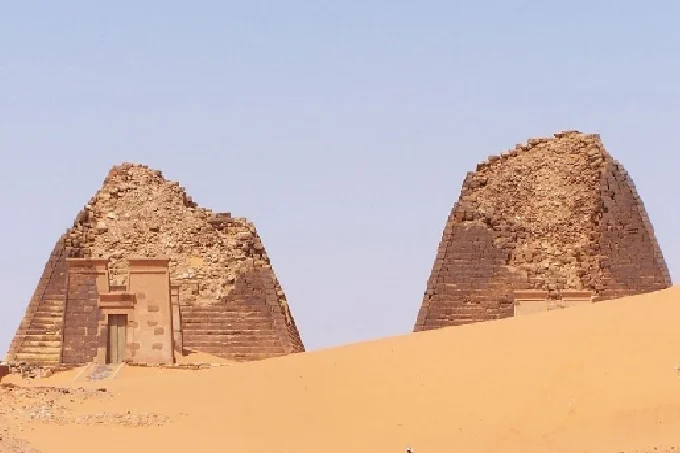Why is Jebel Barkal important?

Jebel Barkal is relatively few ancient monuments on the territory of modern Sudan. This territory was nothing remarkable, it bordered Ancient Egypt to the north and Nubia to the south. There has never been any statehood or any semblance of it, since none of the nearby civilizations found this desolate plain near the next bend of the Nile interesting.
This fact has long seemed very strange to all historians studying ancient Egypt. Indeed, the territory located at the intersection of trade routes of several states was practically not controlled by anyone. Moreover, two of Egypt’s most important trade routes in the south ran along with it: to the Nubian Kingdom and to Punt, located on the territory of modern Ethiopia. The latter was a supplier of luxury goods and religious worship for the Egyptians, which was very important for them.

However, everything turned out to be a little different from what Egyptologists had assumed. And at the beginning of the 20th century, evidence was found that there was something here after all. In 1912, in the north of Sudan, a mysterious rock was discovered in the middle of the desert, almost 100 meters high. The ruins of several large religious buildings were located around it, and the rock itself turned out to be a bit difficult – numerous passages, galleries, and rooms were located inside it.
Systematic studies of this rock have shown that the Egyptians had a hand in creating the entire temple complex. And there was plenty of evidence of this – there were various plates with hieroglyphs everywhere, there were wall images. There were even symbolic pyramids and purely Egyptian burial sites with mummies in some places.
In total, about 15 different structures and objects were discovered, dating from the 1st to the 5th century BC and filled with typically Egyptian paraphernalia. But, strangely, the dating of structures by the radiocarbon method did not correspond to what was depicted on the steles and buildings.
Usually, Egyptian inscriptions and drawings are always narrated about the present tense. In very rare cases, when very epochal and important historical events were described, it was reported in the drawings with the help of special signs that here we are talking about the affairs of “bygone days”. And it’s not just that: the main characters of the narratives – pharaohs and priests have always been unequivocally associated with a particular era.
The ruins of Jebel Barkala (which is an Arabic tracing paper from its ancient Egyptian name – the Sacred Rock) are an interesting exception from the entire Egyptian chronicle. A time shift seems to be taking place in them. In the third century BC, the pharaohs of the 18th dynasty, like Thutmose the 3rd and Amenhotep, are described as contemporaries of the architects who created Barkal. Their cases are presented in the form of the “present tense” and no parallels are drawn with the “modern” pharaohs, so characteristic of ancient Egyptian historical works. And everything would be fine if it weren’t for one “but”: the 18th dynasty was more than a thousand years removed from the creators of these texts and drawings.

But that’s not all. The fact is that the Jabel-Barkal rock is located in the desert in such a way that such an arrangement cannot but raise questions. In a radius of several kilometers around it, there is absolutely nothing but sand. And its very inner content raises more questions than answers.
It would seem that for the Egyptians who managed to build pyramids and milled millions of tons of limestone for this purpose, it would not be a problem to make passages and galleries in the rock. However, everything turned out to be not as simple as it seemed at first glance. Several dozen attempts have been found to begin the construction of interior spaces in the rock, dated from the 17th to the 15th centuries BC. But the construction began (and was actually completed) only in the 15th century. Why have no special measures been taken to force it for 200 years?
Relatively recently, evidence has been found describing the construction of a complex in the Jebel Barkala area. It was a mural in one of the tombs. It describes how Pharaoh Thutmose III, as soon as he became ruler, first of all, went to the vicinity of this rock and personally ordered to speed up all measures for the construction of temple complexes and caves. The Pharaoh’s task was completed in full only 50 years after his death, and the priests and their servants went to the area of the Sacred Rock. At the same time, three temples were built, and all the work was done inside the rock.
It is believed that the temple complexes belonged to the priests of the cult of Amun (the supreme god of Egypt), which, of course, is not surprising, because the construction was patronized by the Pharaohs. However, during the reign of Ramses the 2nd the Great (which came only 150 years after the opening of the temple), it was abandoned, all valuables were removed, and the Egyptians left this place for a long time.

Life returned to Jebel Barkal only in the 6th century BC, when Egypt was conquered by Assyria. In less than 300 years, the new dynasty not only restored the ministry of Amon, but also built about a dozen new temples and other religious objects… However, why are contemporaries not mentioned in the paintings of new temples and sanctuaries, and their main characters are personalities who lived almost 1000 years ago?
What could be the reasons for such a discrepancy? Radiocarbon analysis is very accurate and practically does not fail. Its principle is simple and has been tested by multiple studies. Even the most convinced skeptics have long been convinced that this method can be trusted.
However, there are exceptions. One of them occurs if the samples were exposed to certain types of radiation. Perhaps the Egyptians, who lived at that time and in that place, experienced the effect of some kind of cataclysm? This may well be the case since there has been evidence on Earth more than once, if not the use of nuclear weapons, then at least some of its impact factors.
The Sanskrit texts, the epics of India and the Sumerians, the biblical stories of Sodom and Gomorrah – all this somehow resembles the use of nuclear weapons. Perhaps this happened in Egypt. To get the latest stories, install our app here
We really know very little about what happened at the junction of the 18th and 19th dynasties of the Egyptian Kingdom. It was a very difficult period because few of the then rulers left the throne from natural causes. The country of that time was literally in a fever. However, with the advent of a new dynasty, and its strongest ruler, Ramses the Great, all serious problems disappeared, and Egypt was waiting for at least three centuries of a relatively comfortable life.

It is possible that such a change of dynasties was preceded by a serious military conflict in which some destructive weapons were used. It is likely that the center of its application was the temple complex in Barkale.
There is very little historical evidence of that time, perhaps we will never know what really happened then in Jebel Barkal, but, on the other hand, research on this phenomenon has been going on for no more than several decades. Perhaps the answer is already close.




